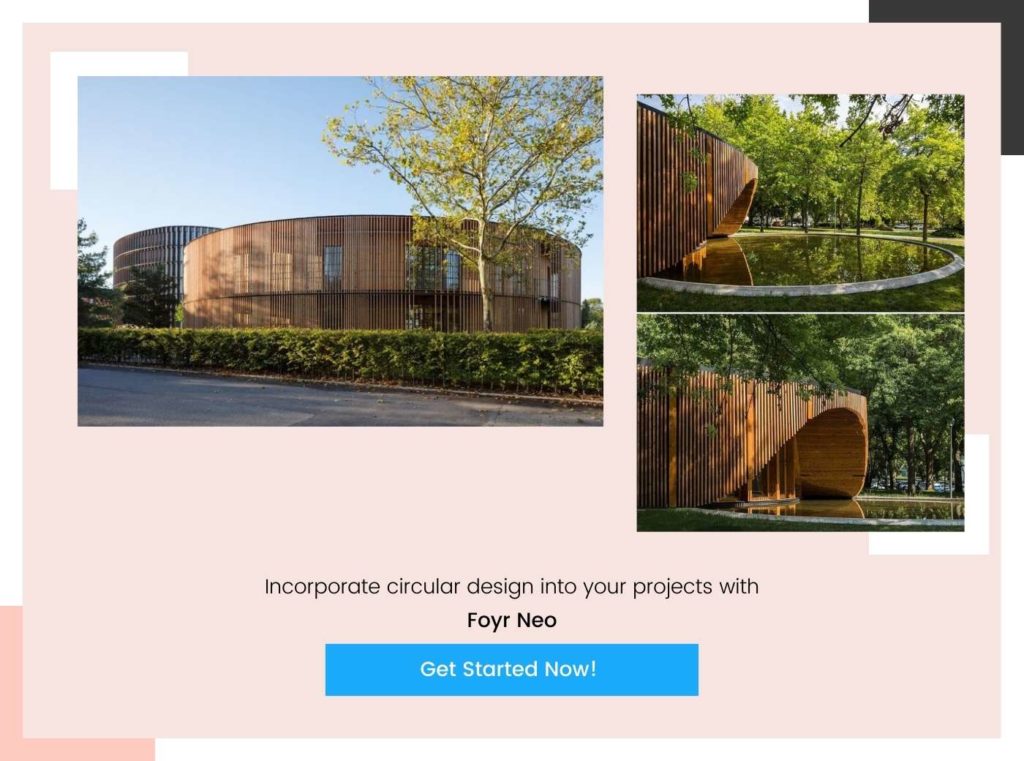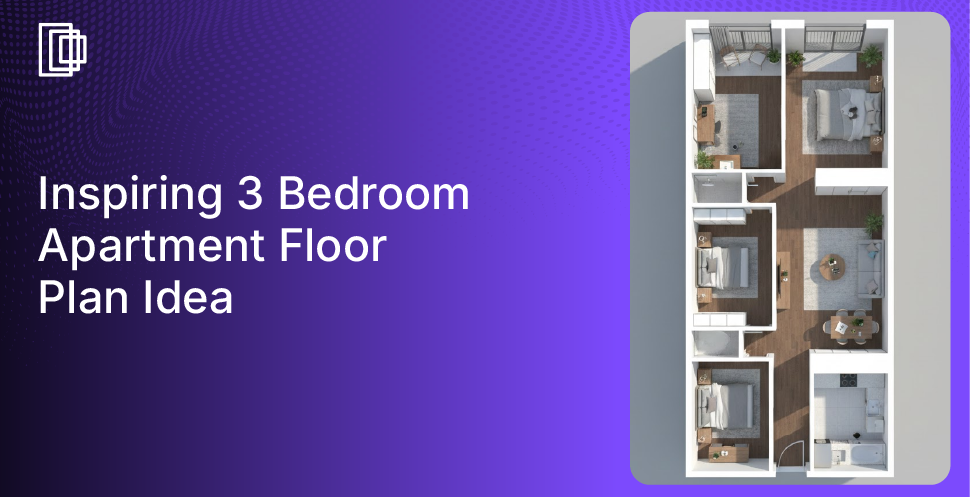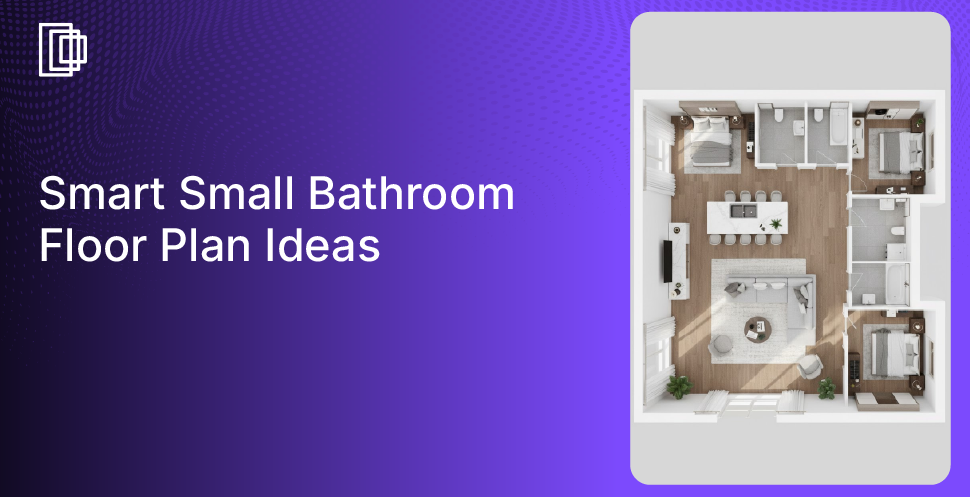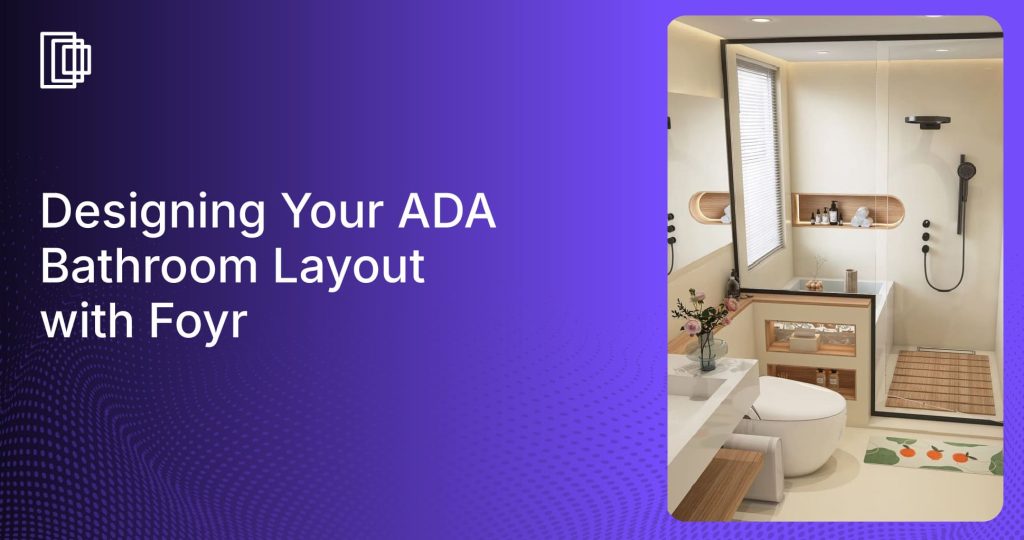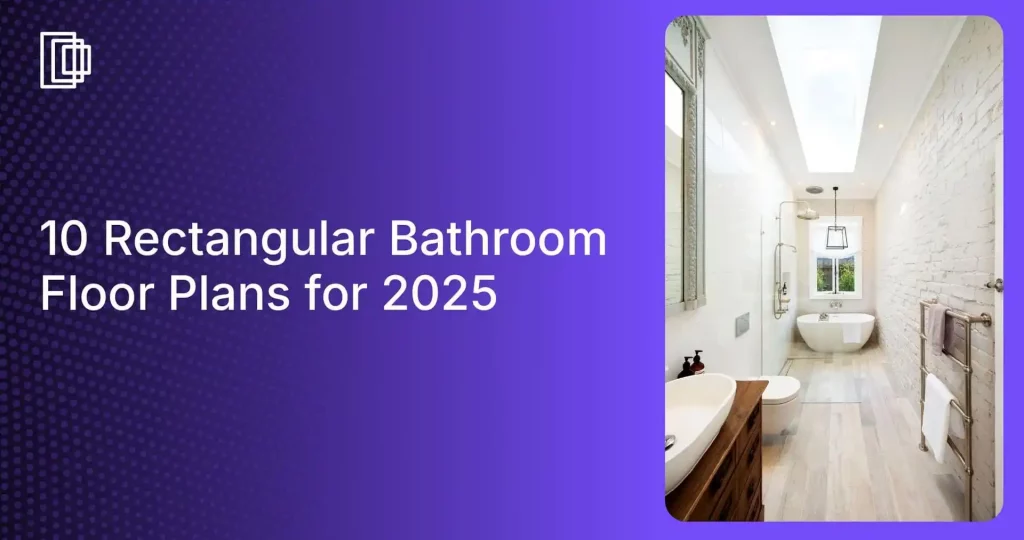Introduction
Imagine living in a world where our homes and workplaces are not just spaces we occupy but are part of a larger, sustainable ecosystem—a world where the materials used in our buildings are recycled, reused, and regenerated, minimizing waste and environmental impact. This vision is at the heart of circular design in architecture and interior design.
As we face growing concerns about climate change and resource depletion, adopting circular design principles isn’t just a trend; it’s a necessity for creating a sustainable future.
In this blog, we’ll delve into the essence of circular design, exploring its principles and significance in modern architecture and interior design. We’ll discuss practical ways to incorporate circular design into your projects, including how tools like Foyr Neo can help visualize sustainable materials and layouts that align with circular principles. We’ll also examine real-world examples where these principles are making a tangible difference. Let’s embark on this journey toward sustainability together.
What Is Circular Design?
Circular design is more than just a buzzword; it’s a transformative approach that rethinks how we create and use products and spaces. Unlike the traditional linear model of “take, make, dispose,” circular design operates on a closed-loop system. This means materials and products are kept in use for as long as possible, and at the end of their life cycle, they’re regenerated or recycled to minimize waste.
The Ellen MacArthur Foundation, a pioneer in promoting the circular economy, describes circular design as:
“A framework for an economy that is restorative and regenerative by design.”
In architecture and interior design, this translates to creating buildings and spaces that are not only aesthetically pleasing but also environmentally responsible. It involves thoughtful material selection, designing for adaptability and longevity, and considering the entire lifecycle of the building and its components.
Why Is Circular Design Important in Architecture and Interior Design?
The importance of circular design in our field cannot be overstated. The construction industry is a massive consumer of resources and a significant contributor to waste and carbon emissions. By embracing circular design principles, we can address several critical issues:
Environmental Impact
Did you know that the construction industry consumes about 50% of the world’s raw materials? That’s a staggering figure. Moreover, construction and demolition waste make up over one-third of all waste generated globally. Circular design helps reduce this by promoting the use of recycled and sustainable materials, reducing the need for virgin resources, and minimizing waste.
Economic Benefits
While some may argue that sustainable materials and practices are costly, circular design can lead to significant economic advantages in the long run. Reusing materials and designing buildings for adaptability can reduce construction costs and extend the building’s lifespan. Additionally, energy-efficient designs lower operational costs over time.
Social Responsibility
There’s a growing awareness and demand for environmentally responsible practices. Buildings that incorporate circular design principles contribute to healthier living and working environments, improving the well-being of occupants. They also reflect a commitment to ethical practices and social responsibility, aligning with global initiatives like the United Nations’ Sustainable Development Goals.
Principles of Circular Design
Understanding the core principles of circular design is essential for implementing it effectively. Here are the three fundamental principles:
1. Design Out Waste
This principle is about being proactive in preventing waste from the outset. By carefully planning and optimizing the use of materials during the design and construction phases, we can significantly reduce excess. It also involves thinking creatively about how what might traditionally be considered waste can be repurposed or recycled into new materials or products.
2. Keep Products and Materials in Use
The goal here is to extend the life of materials and products. This can be achieved by choosing durable materials, designing buildings and interiors that can be easily adapted or reconfigured, and selecting products that can be repaired or upgraded instead of replaced. It’s about creating a culture of maintenance and longevity rather than disposability.
3. Regenerate Natural Systems
Circular design doesn’t just aim to do less harm; it seeks to have a positive impact on the environment. This involves integrating renewable energy sources like solar or wind power, incorporating green spaces and biophilic design elements to support biodiversity, and using materials that can be safely returned to the environment after use.
Circular Design in Architecture: Real-World Examples
1. Park 20|20, The Netherlands
Park 20|20 is a groundbreaking office park designed by William McDonough + Partners, embodying the very essence of circular architecture. The entire development is based on Cradle-to-Cradle principles, meaning all materials used are safe for human health and the environment and can be fully recycled or composted.
The buildings are constructed with materials that have been carefully selected for their sustainability credentials. For instance, the use of recyclable aluminum and biodegradable insulation materials ensures that, at the end of their useful life, these components can be reclaimed or returned to the earth without causing harm.
Energy efficiency is another cornerstone of Park 20|20. The buildings are equipped with solar panels and geothermal energy systems, significantly reducing their reliance on fossil fuels. Rainwater is harvested and reused for irrigation and flushing toilets, showcasing a holistic approach to water management.
The design also places a strong emphasis on occupant well-being. Abundant natural light, excellent air quality, and green spaces contribute to a healthy and productive environment. By integrating these circular design principles, Park 20|20 not only minimizes environmental impact but also creates a vibrant community space.
 2. Bullitt Center, Seattle, USA
2. Bullitt Center, Seattle, USA
Often hailed as the “greenest commercial building in the world,” the Bullitt Center sets a new standard for sustainability in architecture. Designed by the Miller Hull Partnership, the building operates on the principles of the Living Building Challenge, which goes beyond LEED certification in its stringent requirements.
One of the most remarkable features of the Bullitt Center is its energy-positive status. The building’s rooftop is adorned with solar panels that generate more electricity than the building consumes annually. This surplus energy can be fed back into the grid, contributing to the wider community’s energy needs.
Water management is another area where the Bullitt Center excels. The building captures rainwater, which is filtered and treated on-site, making it safe for all uses, including drinking. Wastewater is treated through composting toilets and greywater systems, reducing the burden on municipal systems.
The materials used in construction were meticulously vetted to exclude any harmful substances, aligning with the project’s commitment to material transparency and human health. The Bullitt Center is not just a building but a living example of how circular design principles can be applied to create a sustainable and self-sufficient structure.
 Circular Interior Design: Practical Applications
Circular Interior Design: Practical Applications
Embracing circular design in interior spaces involves thoughtful choices and innovative strategies. Here are some practical ways to incorporate these principles:
1. Thoughtful Material Selection
Selecting materials is a critical step in circular interior design. Opt for materials that are renewable, recyclable, or have a low environmental impact. For example, using reclaimed wood not only gives a second life to the material but also adds character and history to the space. Recycled metals and glass can also be excellent choices for fixtures and decorative elements.
Moreover, consider the health implications of the materials you choose. Non-toxic paints and finishes with low or zero VOCs improve indoor air quality, contributing to a healthier environment for occupants.
2. Embracing Modular Furniture
Modular furniture is a game-changer for circular design. These pieces are designed to be flexible, allowing you to reconfigure or expand them as your needs change. This adaptability extends the furniture’s lifespan and reduces the need for replacement. Additionally, modular designs often allow for individual components to be repaired or replaced, further minimizing waste.
3. Reducing Waste Through Upcycling
Upcycling is a creative way to reduce waste by transforming old or discarded items into something new and valuable. For instance, an old door can become a unique tabletop, or vintage textiles can be repurposed into cushion covers. This approach not only reduces waste but also adds a personalized touch to your interior design.
4. Incorporating Biophilic Elements
Biophilic design, which involves integrating natural elements into interior spaces, aligns perfectly with circular design principles. Introducing indoor plants improves air quality and creates a calming atmosphere. Maximizing natural light reduces the need for artificial lighting during the day, conserving energy. These elements not only enhance the aesthetic appeal but also promote the well-being of the occupants.
Circular Design Principles in Action: Case Studies
1. The Infiniski Manifesto House, Chile
The Infiniski Manifesto House is a shining example of how innovative design and sustainability can go hand in hand. Constructed using 85% recycled, reused, and non-polluting materials, the house demonstrates that eco-friendly building doesn’t have to compromise on style or comfort.
Shipping containers form the structural basis of the house, providing a robust and reusable framework. Wooden pallets and recycled metals are incorporated into the facade and interior finishes, adding unique textures and warmth to the design.
Energy efficiency is central to the house’s design. Solar panels supply renewable energy, while the orientation and insulation of the building maximize natural heating and cooling, significantly reducing energy consumption. The result is a home that not only minimizes environmental impact but also offers affordability—a crucial factor in promoting sustainable housing on a broader scale.
2. Nike’s Circular Design Guide
While not a building, Nike’s Circular Design Guide is an influential resource that extends the principles of circularity into product design, which can inspire approaches in interior design as well. The guide encourages designers to think about the entire lifecycle of a product, from material selection to end-of-life considerations.
Nike focuses on material innovation, developing fabrics from recycled polyester and organic cotton, reducing reliance on virgin materials. By designing products for durability and recyclability, they ensure that materials can be reclaimed and reused, closing the loop in the product’s lifecycle.
The impact of this guide is significant, as it not only influences Nike’s vast product line but also sets an example for other companies. It promotes consumer awareness about sustainability and encourages the industry to adopt circular practices, demonstrating that environmental responsibility and business success can go hand in hand.
Challenges and Solutions in Implementing Circular Design
Implementing circular design principles is not without its challenges. However, understanding these hurdles can help us find effective solutions.
Challenges
- Supply Chain Complexity: Sourcing sustainable materials can be difficult due to limited availability or higher costs. Additionally, verifying the sustainability credentials of suppliers requires diligence.
- Initial Costs: Sustainable technologies and materials may have higher upfront costs, which can deter clients or stakeholders focused on short-term budgets.
- Regulatory Hurdles: Building codes and regulations may not always accommodate innovative designs or sustainable technologies, slowing down adoption.
Solutions
- Collaboration and Networking: Building relationships with suppliers who specialize in sustainable materials can streamline the sourcing process. Collaborative platforms and industry networks can also provide valuable information and support.
- Life Cycle Cost Analysis: Demonstrating the long-term economic benefits through life cycle costing can justify the initial investment. Lower operational costs and increased building longevity offer compelling arguments for stakeholders.
- Advocacy and Education: Engaging with regulatory bodies to advocate for changes in building codes can facilitate the adoption of circular design practices. Educating clients and the public about the benefits of sustainable design can also drive demand and acceptance.
How to Incorporate Circular Design Principles in Your Projects
Adopting circular design doesn’t have to be overwhelming. Here are some steps to guide you:
1. Educate Yourself and Your Team
Stay informed about the latest sustainable materials, technologies, and design strategies. Attending workshops, webinars, or courses on circular design can enhance your knowledge and inspire innovative ideas.
2. Set Clear Goals
Define what you want to achieve with your project in terms of sustainability. Establish measurable targets, such as reducing waste by a certain percentage or achieving a specific energy efficiency rating.
3. Engage Stakeholders Early
Involve clients, contractors, and suppliers from the beginning. Communicate the benefits of circular design clearly to gain their support and collaboration. When everyone is on the same page, implementing sustainable practices becomes much smoother.
4. Design for Disassembly and Adaptability
Plan your projects so that materials and components can be easily disassembled and reused. Use mechanical fasteners instead of adhesives, and consider modular designs that allow for future reconfiguration.
5. Utilize Digital Tools
Leverage technology like Building Information Modeling (BIM) to optimize material use and efficiency. BIM can help identify potential issues early on and facilitate better decision-making throughout the design and construction process.
The Future of Circular Design
The momentum behind circular design is building, with governments, organizations, and industries recognizing its importance. The European Union’s Circular Economy Action Plan is one such initiative aiming to make sustainable products the norm and reduce waste significantly.
Globally, over 500 organizations have committed to the Ellen MacArthur Foundation’s initiative to eliminate plastic waste and pollution. This collective effort signals a shift towards embracing sustainability at all levels.
Architect William McDonough, a thought leader in sustainable design, emphasizes the role of intention:
“Design is the first signal of human intention.”
Our intentions as architects and designers have profound implications for the environment and society. By choosing to incorporate circular design principles, we signal a commitment to a sustainable and regenerative future.
 Conclusion
Conclusion
Circular design in architecture and interior design is more than a methodology; it’s a philosophy that challenges us to rethink how we create and inhabit our spaces. By focusing on sustainability, resource efficiency, and adaptability, we not only reduce our environmental impact but also enhance the quality and longevity of our buildings and interiors.
Embracing circular design is a journey of continuous learning and innovation. It invites us to collaborate, to be creative, and to take responsibility for the legacy we leave behind. Whether you’re a professional in the field or someone interested in making more sustainable choices in your own home, every effort counts toward building a better, more sustainable world.


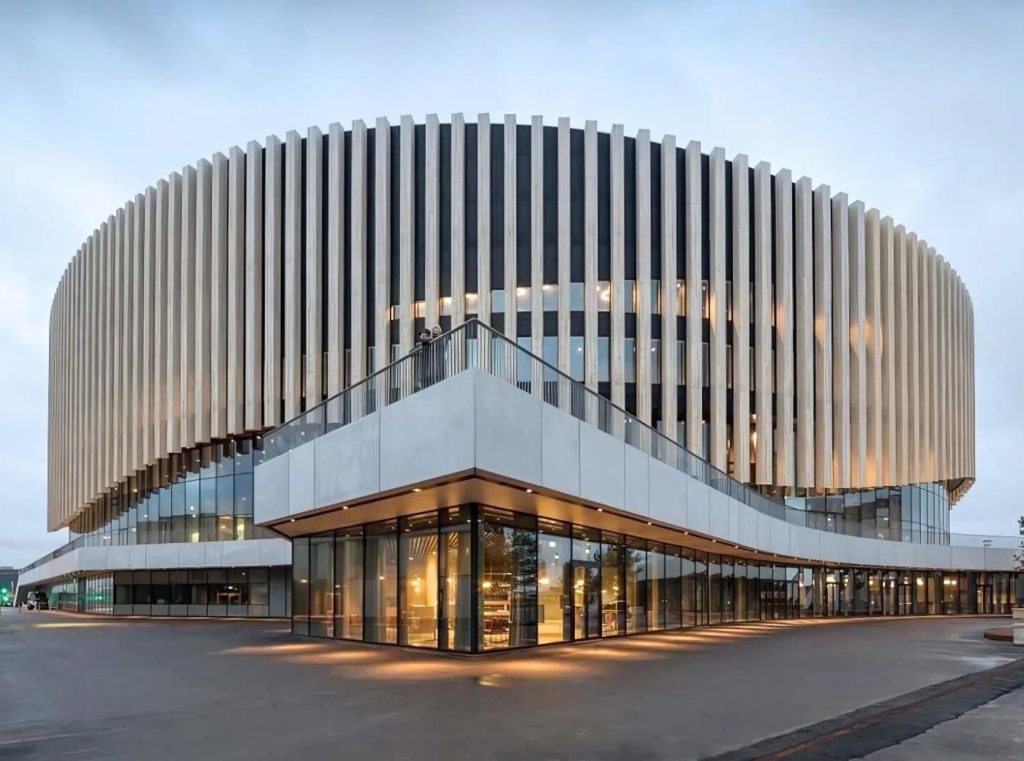
 2. Bullitt Center, Seattle, USA
2. Bullitt Center, Seattle, USA Circular Interior Design: Practical Applications
Circular Interior Design: Practical Applications